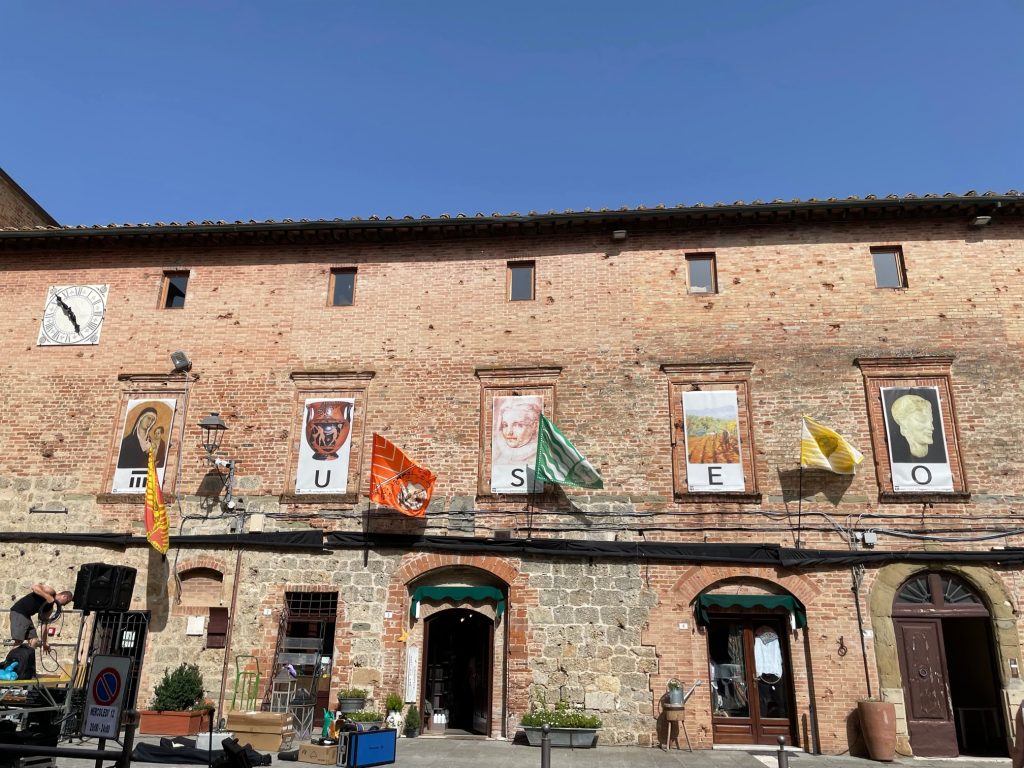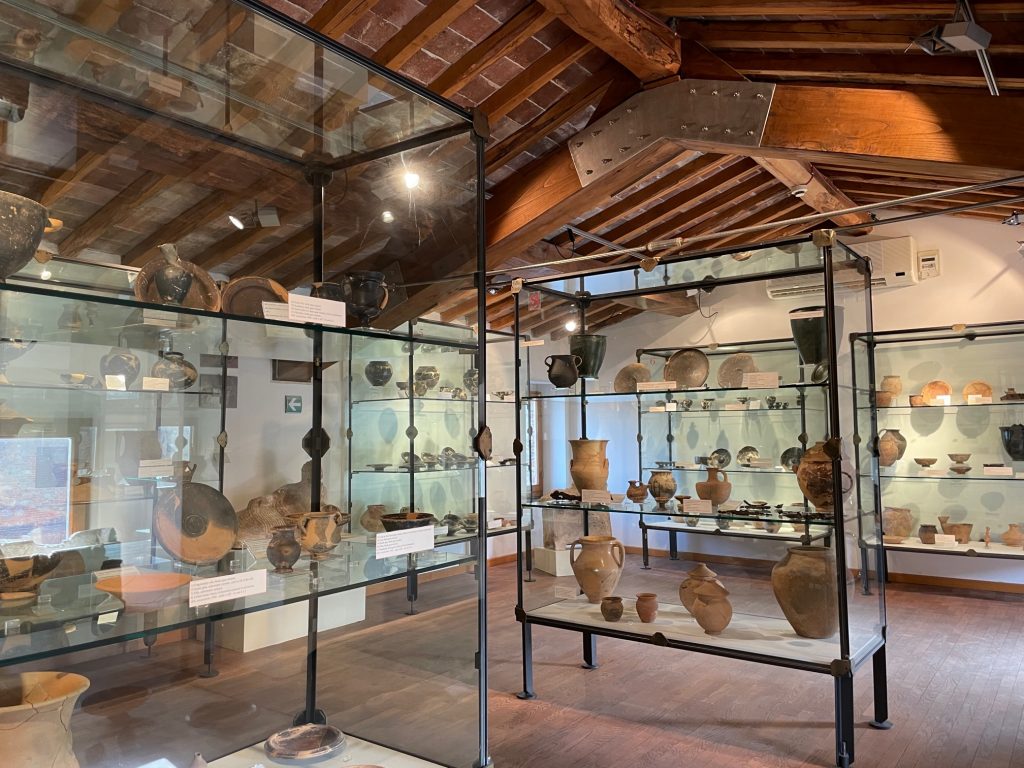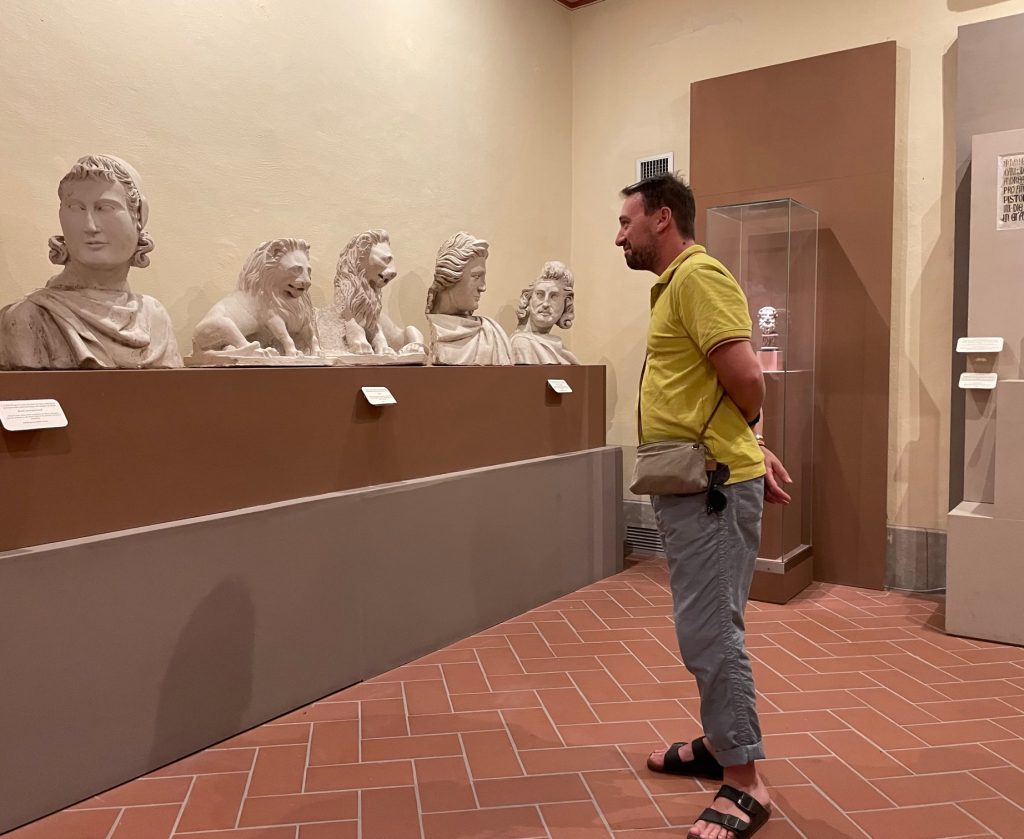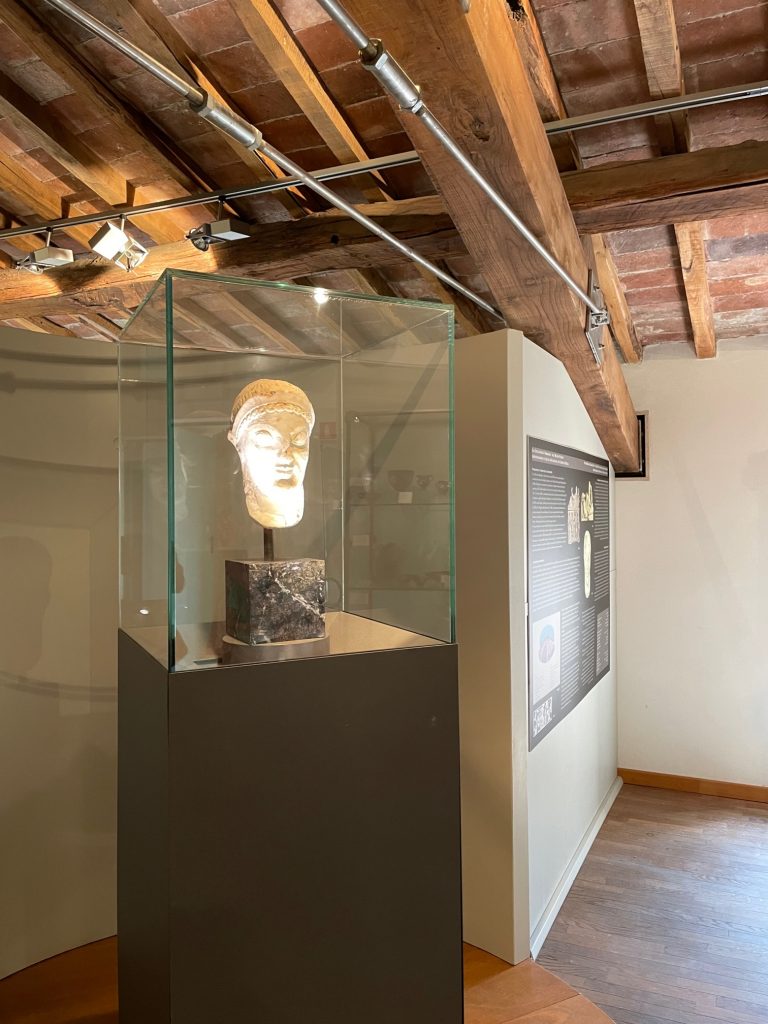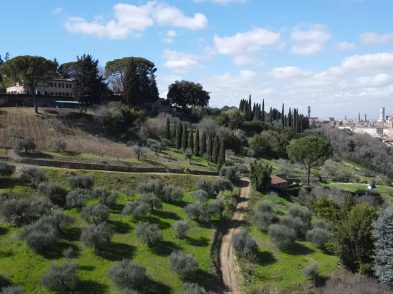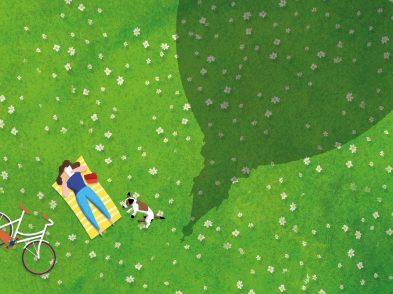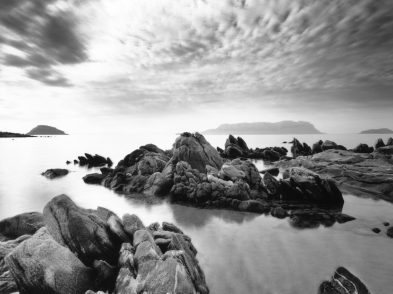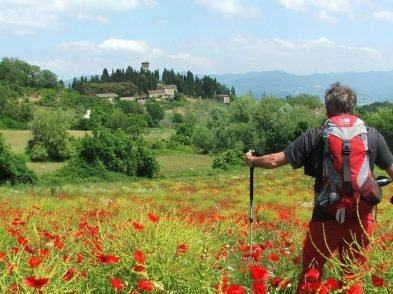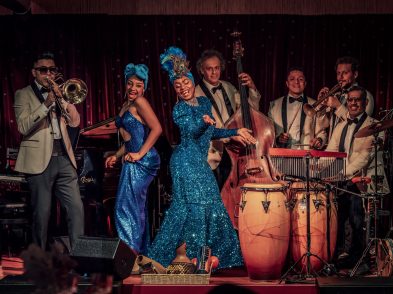Casole d’Elsa is the prettiest of hilltop towns. Removed from the maddening crowds of celebrated Tuscan honeypots, this immaculately maintained village is the epitome of civic pride with its trademark town walls, breezy benches and quality attractions.
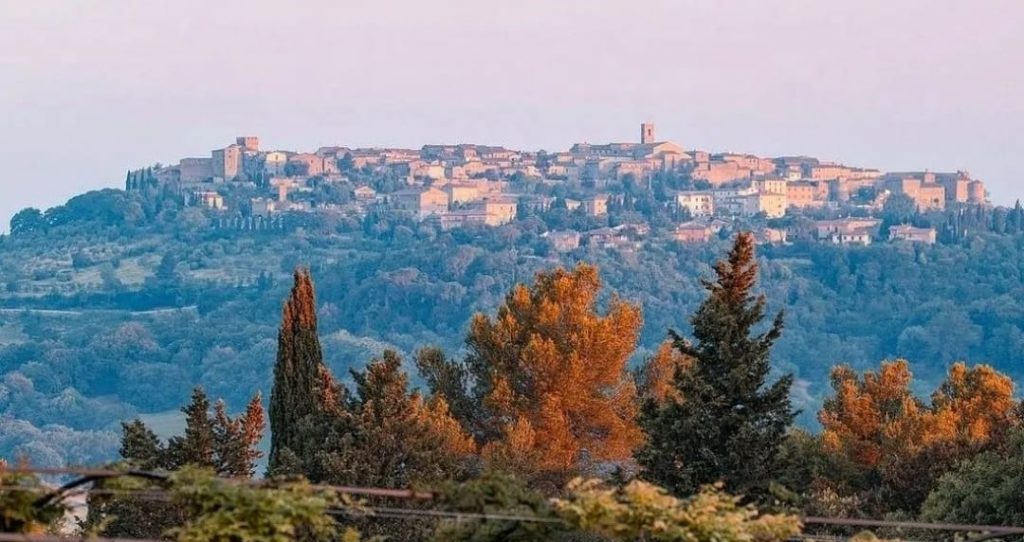
Visiting Casole d’Elsa
Take the lift or walk the short climb up to the town walls, which include two rotund towers dating to the 15th century, and the 14th-century fortress, known as the Rocca, which now acts as the town hall. Wander inside the Rocca to learn some local history from the information panels affixed to the medieval walls before marvelling at the impressive views over the plain from piazza Luchetti, which is dotted with contemporary artworks.
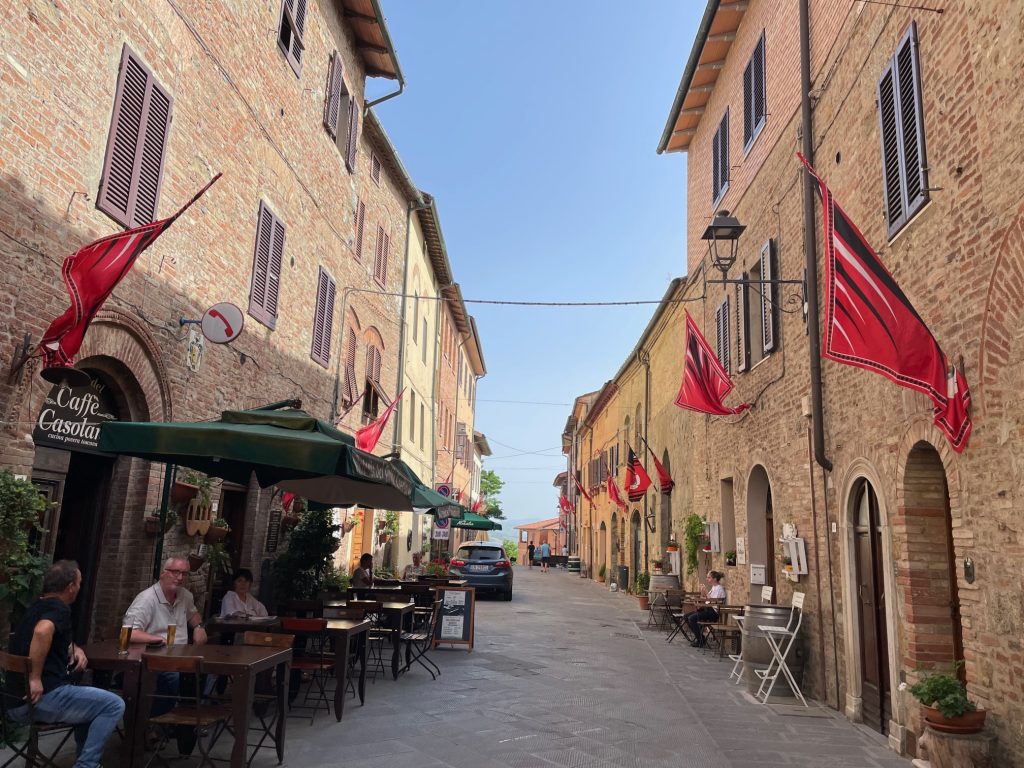
The main attraction is the Archaeological and Collegiate Museum, which stands at the heart of the hilltop town. Emblazoned with local flags and banners spelling out the word museo, this striking brick-fronted building contains just as many treasures inside. Archaeologists will have a field day in this busy and brilliant encyclopaedia of the area’s Etruscan past. A map displays local findings, mostly to the north and west of the town, as the first room contains the Bargagli Collection, whose hoard of funerary urns and grave goods, including reconstructed amber beads and bronze scarf pins, from the Hellenistic era was unearthed at Querceto (now Castello di Casole, A Belmond Hotel) in the 19th century. Upstairs beneath old wooden beams, visitors gaze at the illuminated Carraia marble head, which probably stood once atop a temple to welcome the faithful. Carbon 18 testing has dated the relic to around 550 BCE. Sets of coins, beauty accoutrements and wine serving paraphernalia provide additional dimensions to our understanding of Etruscan life. In a fitting twist, through a window we can see the Church of San Niccolò, whose adjacent burial mount is where most of the relics in the room were recovered.
The quality offered by the museum, which over the years has expanded from being purely archaeological in nature, also caught the attention of the Uffizi Galleries, which chose Casole d’Elsa as the first municipality in the Siena province to take part in its Uffizi Diffusi project. Harnessing the Uffizi’s allure to draw travellers out to lesser known towns and villages, the museum is currently hosting a small-scale yet top-tier exhibition of Augusto Bastianini. Featuring a self-portrait on loan from Florence’s foremost gallery, the show includes exquisitely executed scenes of local life in the 19th century by the artist from Monteguidi, such as Shoeing the Ox. Enticed by the Uffizi’s involvement, there’s plenty more to please in this extraordinarily rich rectory-turned-museum, such as the theatrical altarpiece by Andrea di Niccolò and the room dedicated to Marco Romano, whose statues rest in the shadows in Siena Cathedral, yet his plaster casts are on full view here. Adjacent to the museum stands the Collegiata Church of Santa Maria Assunta, with captivating Last Judgment fresco fragments in a side chapel, plus an oddly dumpy wall-mounted cenotaph commemorating Bernardino degli Albertini, lord of Casole d’Elsa in the 14th century.
Experiencing the Etruscan past at Castello di Casole
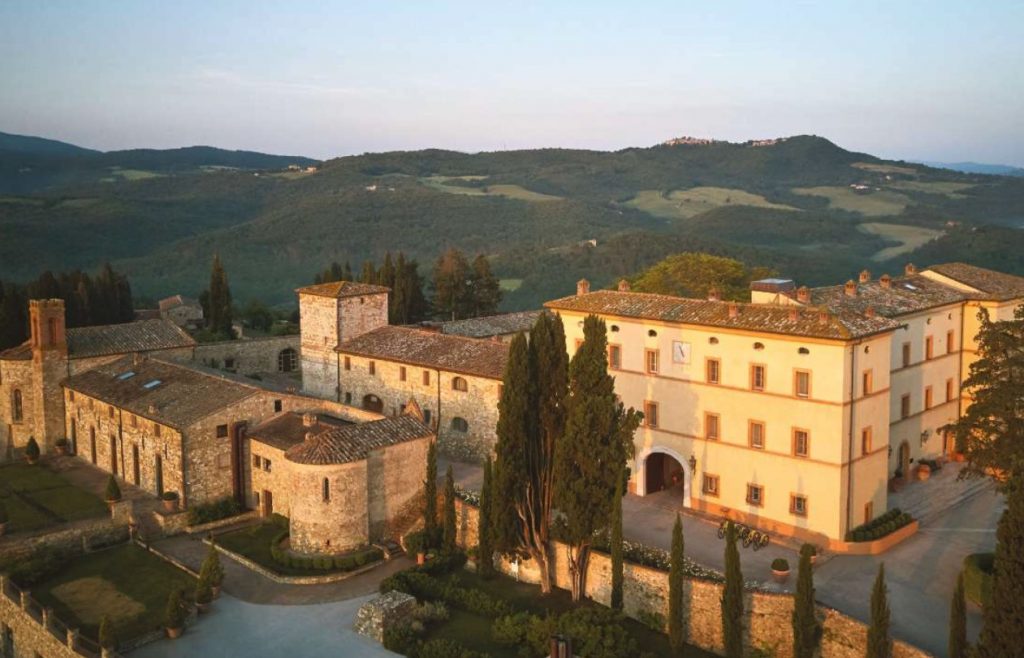
Southeast of Casole d’Elsa, Castello di Casole bears evidence of the wealth of Etruscan culture. Now part of the Belmond Group, the estate is home to a collection of Etruscan masterpieces belonging to former owners, the Bargagli family. Between 1870 and 1875, Marquis Piero Bargagli carried out excavations that unearthed a hoard of 5th- to 3rd-century BCE artefacts, some of which are displayed in the hotel’s spa and library, while the rest were donated for display at the Civic Museum of Archaeology in Casole d’Elsa. The hotel aims to bring the Etruscan age alive through experiences such as bike rides to Casole d’Elsa to visit the archaeological museum in the company of expert Etruscologist, Marco Bezzini, including stopping by Etruscan tombs for insight into how the ancient civilization lived and died; Etruscan-inspired massages at Essere Spa; and cosmetology workshops teaching guests how to use natural ingredients to create face and body products in the style of the Etruscans.
Local traditions + highlights
Casole Film Festival
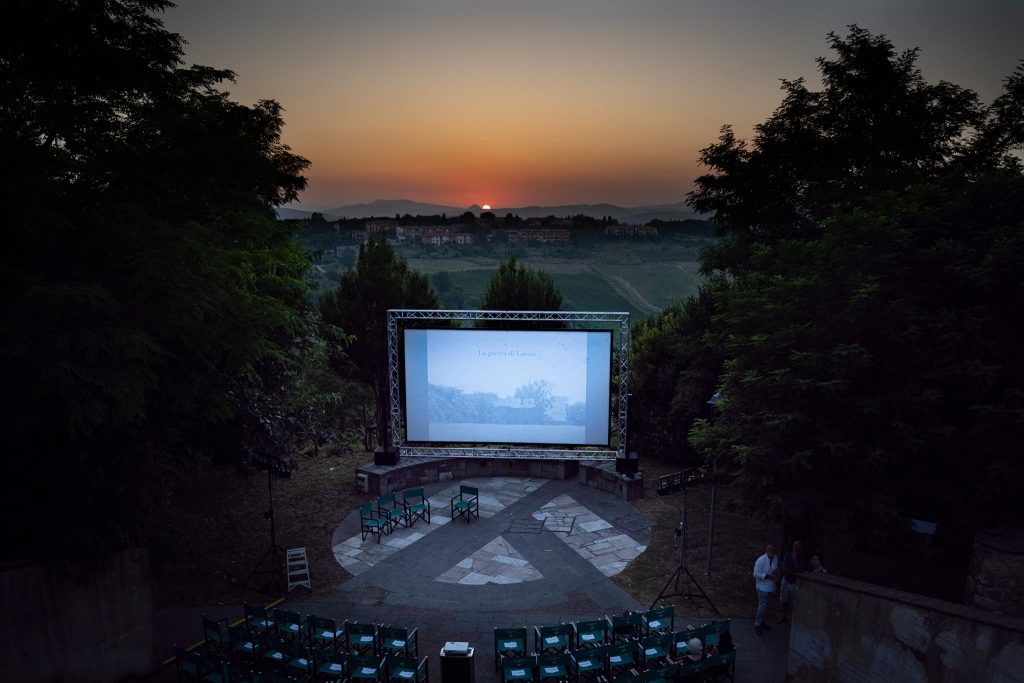
Every June, the Casole Film Festival celebrates emerging independent short films from all over the world, with a special focus on young filmmakers. Movie nights are held in the open-air theatre at Casole d’Elsa and in the amphitheatre of five-star luxury Castello di Casole, A Belmond Hotel before being judged by a panel of experts.
Palio di Casole d’Elsa
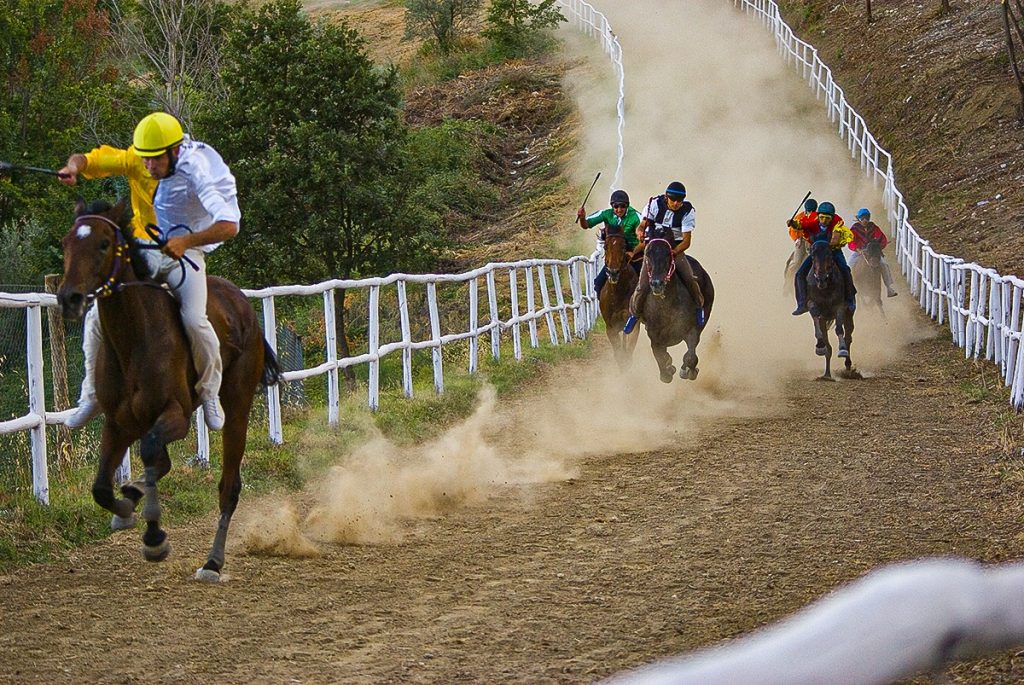
A display of civic pride, the Palio di Casole d’Elsa takes place during the second week of July every year as jockeys ride bareback on horses from the town’s six contrade (neighbourhoods) battle it out around the attractive hillside dirt track. Originating from bygone farming traditions, the week leading up to the race is marked with dinners and festivities among local residents.
Nativity parades
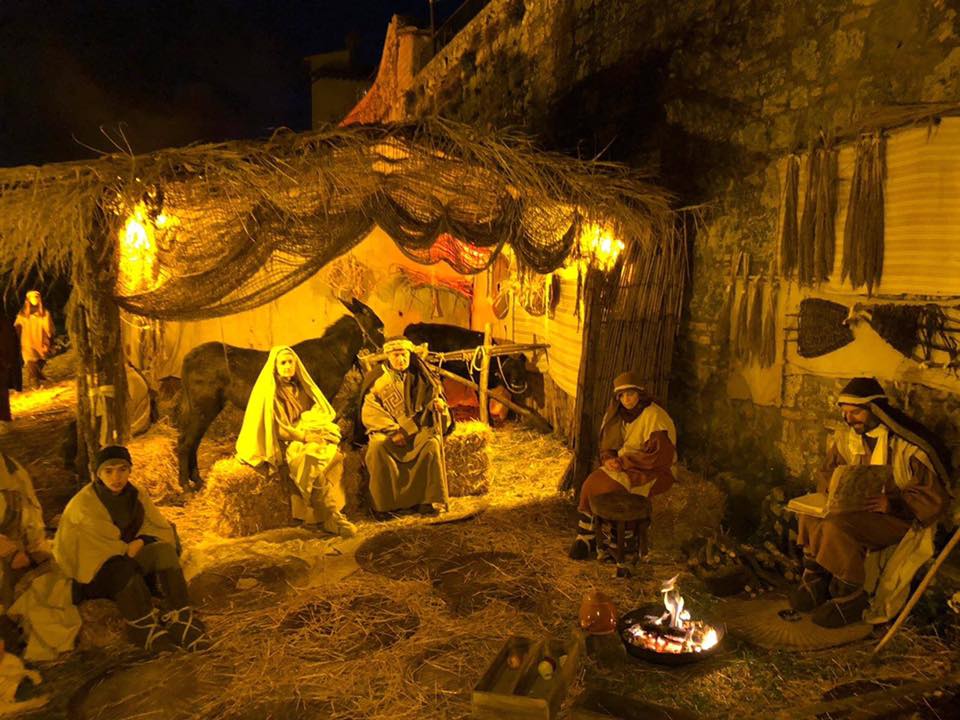
Another highlight in Casole d’Elsa are the nativity parades, in which locals dress up in roles from the Christmas story as the town turns into a take on Bethlehem. Held every other year for the last 20 years, visitors travel from far and wide to behold the magical scene during Christmas week.
With thanks to Benedetta Sardelli (Castello di Casole), Vittoria Panichi (culture councillor, Casole d’Elsa), Marco Bezzini (president, Società Archeologica Valdelsa) and Patrizia La Porta (director, Museo Civico Archeologico e della Collegiata).

